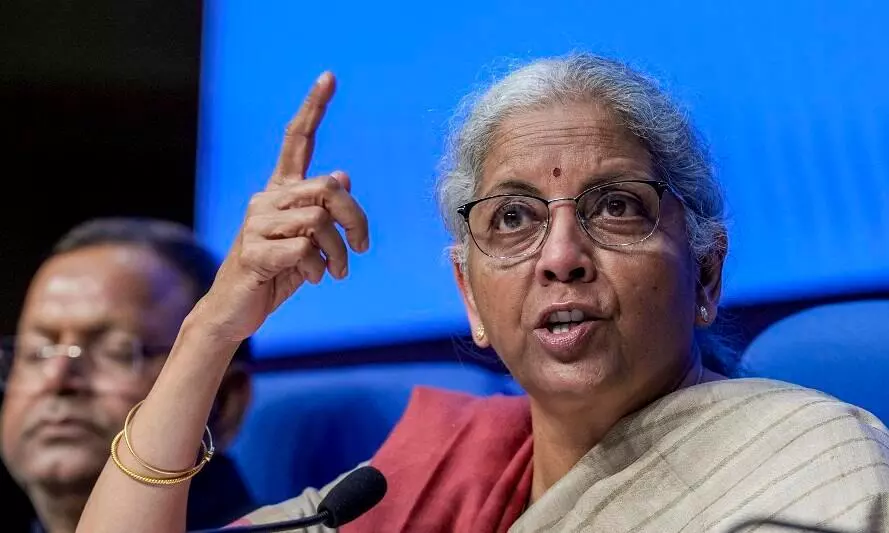
FM Sitharaman unveils sweeping GST reform plan to GoMs
Reforms aim to simplify tax structure by reducing slabs to 5% and 18% and a 40% rate for select sin goods; annual revenue loss projected is ₹85,000 crore

Union Finance Minister Nirmala Sitharaman on Wednesday (August 20), presented to the Group of Ministers (GoMs) from states the central government’s plan for sweeping reforms in the Goods and Taxes Tax (GST) regime. The steps include reducing tax rates and giving businesses relief from the burden of compliance.
The GoMs focussing on rate rationalisation, insurance taxation, and compensation cess will spend over two days discussing the Centre's proposed ‘next-gen’ GST reforms, which will impose taxes at rates of five and 18 per cent.
A distinct 40 per cent rate has been suggested for five-seven specific items, including sin goods.
Also read: Sensex jumps over 1,000 points, boosted by investor optimism on proposed GST reforms
Currently, GST is levied at five, 12, 18 and 28 per cent. Food and essential goods are taxed at either zero or five per cent rate, whereas luxury and demerit goods fall under a 28 per cent tax bracket, along with an additional cess.
Benefits of GST
Sitharaman’s address to the GoMs, which lasted for about 20 minutes, saw her explaining the Centre’s proposal, one source said. It added that the minister elaborated on the necessity for GST reforms to the states.
The GoM on compensation cess was formed to determine the fate of compensation cess after the loan repayment period ends. The GoM on insurance was discussing the possibility of lowering tax rates on health and life insurance premiums.
Also read: Spotlight on prospective GST rate cuts pushes current sales into the dark
The GoM responsible for rate rationalisation was tasked with recommending adjustments to slabs and rates, as well as addressing the issue of duty inversion affecting certain sectors. The GoM on GST rate rationalization is set to convene once more on Thursday, August 21.
Annual revenue loss
According to an SBI Research report, if the proposal goes into effect, it could lead to an annual revenue loss of approximately Rs 85,000 crore. For the current fiscal year, the projected revenue loss is around Rs 45,000 crore, assuming the new tax rates are applied starting October 1.
Once approved by the GoMs, the proposal will be presented to the GST Council, which includes ministers from both the Centre and all states, during its meeting next month. Prime Minister Narendra Modi has stated that the rollout of the GST reforms is expected to happen by Diwali.
Also read: Proposed GST reforms aren’t next-gen but design flaws introduced in 2017
The SBI Research report indicated that the effective weighted average GST rate decreased from 14.4 per cent at the beginning to 11.6 per cent in September 2019. Considering the recent rate adjustments, the effective weighted average GST rate could be 9.5 per cent.
(With agency inputs)

